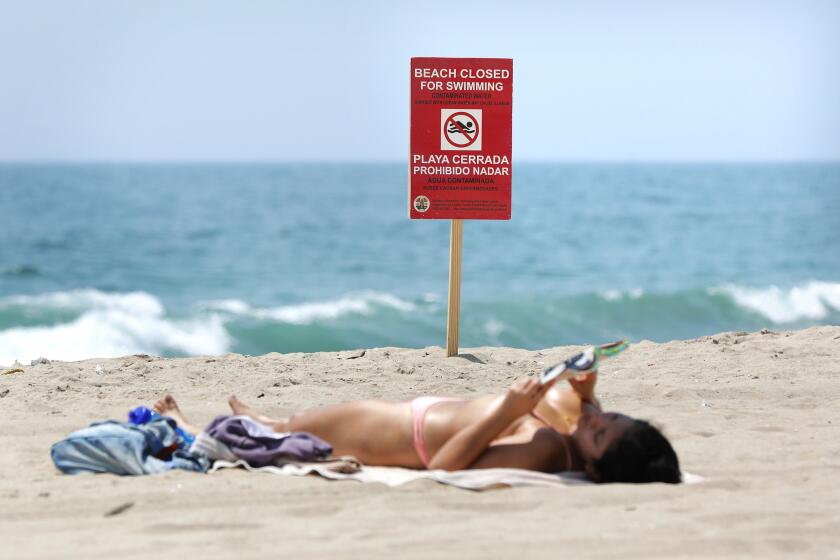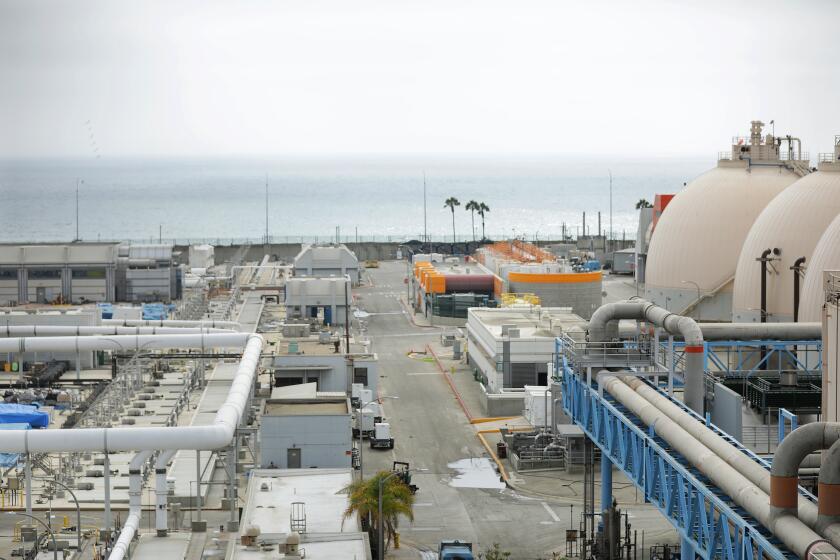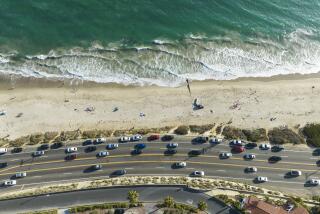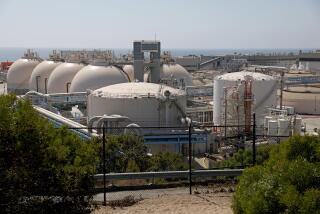Damaged Hyperion plant is releasing partially treated sewage into Santa Monica Bay
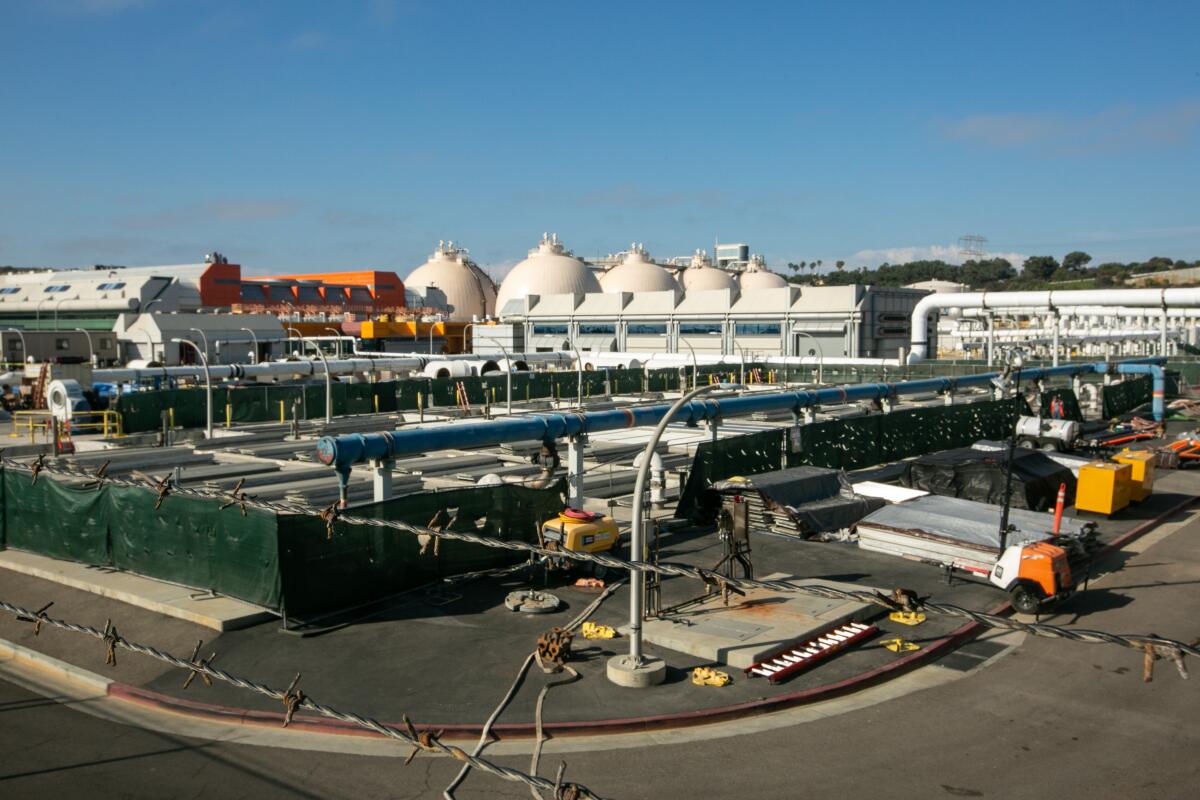
More than two weeks after a flood of raw sewage inundated the Hyperion Water Reclamation Plant and triggered a massive discharge into Santa Monica Bay, the damaged facility has continued to release millions of gallons of partially treated wastewater into the Pacific Ocean, in violation of its environmental permit, The Times has learned.
Responding to repeated inquiries from The Times, Los Angeles city sanitation officials confirmed that the facility has violated multiple state and federal water pollution limits since an emergency discharge sent 17 million gallons of raw sewage into the waters off Dockweiler and El Segundo beaches July 11 and 12. The surge of wastewater sent workers fleeing for their lives and has left the plant in a damaged state.
Sanitation officials said in emails that the facility has exceeded levels for solid particles in the wastewater as well as levels for biological oxygen demand and turbidity, or water clarity, all of which are used to measure the degree of organic pollution during the treatment process.
Each day, the plant discharges 260 million gallons of wastewater into the ocean through a five-mile pipe about 12 feet in diameter. State regulators and environmental experts say that because the wastewater is not fully treated, it could harm people and marine life.
Health officials issued advisories for Dockweiler and El Segundo beaches after finding elevated bacteria levels in water samples.
“We are very concerned about the potential impacts on Santa Monica Bay,” said Renee Purdy, executive officer of the Los Angeles Regional Water Quality Control Board.
The water board ordered Hyperion officials on Thursday evening to conduct daily offshore testing and provide daily status reports on water quality and equipment repair until the plant can resume normal operations, which sanitation officials say could take weeks. The order corroborates information obtained by The Times and shows that the violations began on July 19 and have continued through Wednesday, when the most recently available testing data was returned.
Residents who live near the plant, as well as environmental experts, say city sanitation officials should have informed the public that the facility has been releasing partially treated wastewater into the ocean.
“We are shocked,” said Katherine Pease, science and policy director for Heal the Bay. “It’s been two weeks since the 17-million-gallon sewage spill, and we are only learning now that the plant is not able to fully treat sewage.”
Even as flooding at a major Los Angeles sewage plant threatened the lives of workers, communication failures masked the enormity of the crisis.
A spokeswoman for the L.A. Sanitation and Environment Department, which operates the Hyperion plant, said in a statement Friday that the violations were the result of the significant damage caused to the plant by the flooding.
“Hyperion had 11 years of compliance with effluent discharge permit limits prior to the July 11, 2021, flooding incident,” spokeswoman Elena Stern said. “Hyperion expects to return to its exemplary compliance record with effluent discharge limits in the near future.”
The state order also provides new details on the damage caused after a rapid and huge flow of raw sewage on July 11 forced Hyperion crews to evacuate a water treatment building and subsequently flooded about half of the 200-acre facility.
“Multiple pieces of equipment were rendered non-operational as a result of the flooding,” the order said, including sludge pumps and a waste solid processing system. As a result, solids have accumulated in processing tanks and affected water quality, according to the order.
Hyperion officials have credited the “valiant” work of crews during the flooding with preventing a large-scale environmental disaster.
In an update posted July 21, Sanitation and Environment Department officials said that multiple ocean water tests conducted by the agency showed that bacteria levels were well below state standards.
The agency did not say in that update or subsequent reports posted on its website that sanitation officials had began notifying state regulators on July 19 that the Hyperion plant was exceeding water quality standards, records show.
“The public still doesn’t know the full impacts of the spill on the facility’s treatment processes or whether current discharges are impacting our marine environment,” said Ben Harris, a staff attorney with the environmental organization Los Angeles Waterkeeper.
Operations at Hyperion have come under increasing scrutiny and criticism by local officials and residents who live near the plant. They say that sanitation officials have provided insufficient information regarding the spill and its effects on people and marine life.
A report prepared for the Los Angeles County Board of Supervisors earlier this week found that multiple communications breakdowns involving officials at the Hyperion plant and the county Department of Public Health delayed critical public notifications and a full emergency response during the sewage discharge incident.
In El Segundo, which borders the facility, neighbors have complained of continuous foul odors, as well as rashes, burning eyes and nausea.
Neal Boushell, who lives about a block from the plant, said Friday that the smell was so bad that he left with his family two days earlier to spend time in Carpinteria.
“It is just so awful,” he said of the odor.
More to Read
Sign up for Essential California
The most important California stories and recommendations in your inbox every morning.
You may occasionally receive promotional content from the Los Angeles Times.
